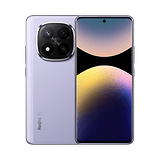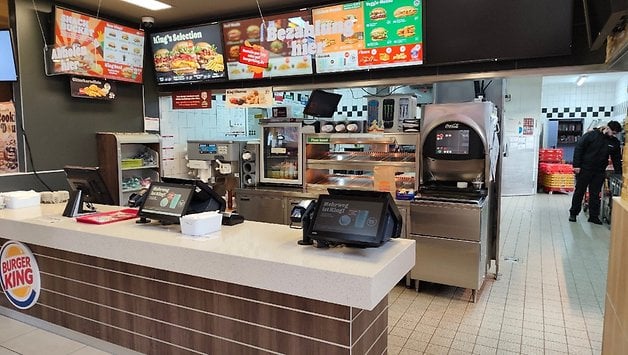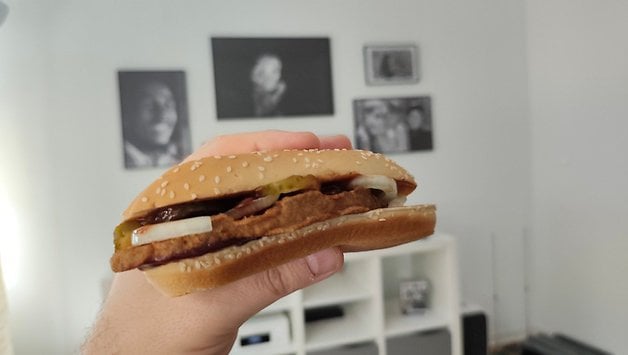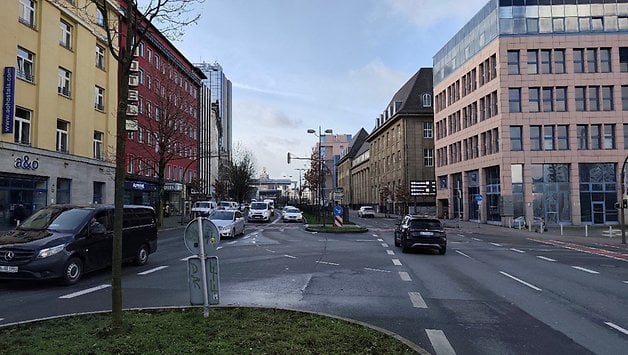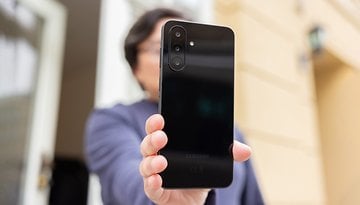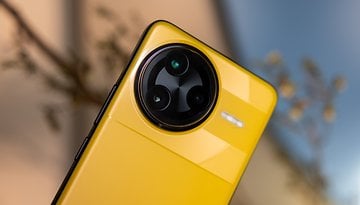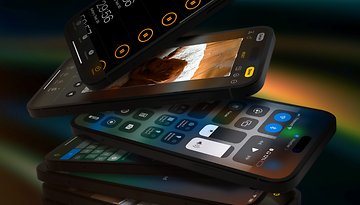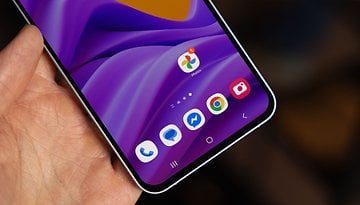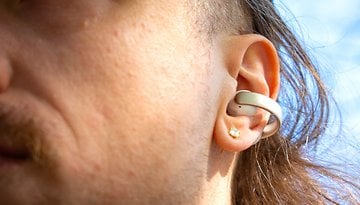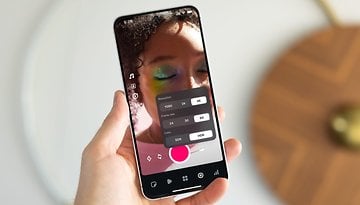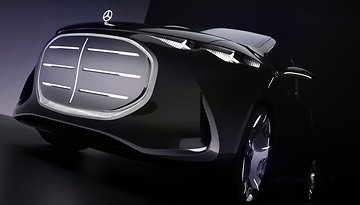Xiaomi Redmi Note 14 Pro+ Review: Power-Packed Yet Underwhelming


The Xiaomi Redmi Note 14 Pro+ has been on sale in China for a long time now as the tip of the current Remi Note series' spear. Now it is also being launched worldwide, and we have taken a detailed look at the sub-$500 Xiaomi smartphone. What do we think of it and how much better is it compared to its predecessor? Stay on to find out! What we can reveal this much in advance is this: it left me somewhat ambivalent!
Good
- Very beautiful design
- Feels great when held
- Great display
- Good main camera
- Fast charging and decent battery life
Bad
- Not much better than the predecessor
- Identical camera system as the predecessor
- Rather mediocre performance
- Always On Display isn't as expected
- Bloatware
- Slower memory than its predecessor
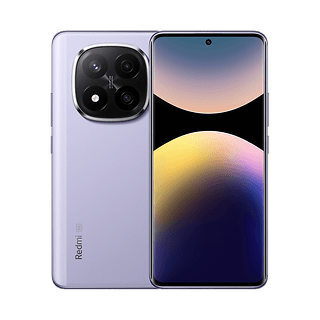
Xiaomi Redmi Note 14 Pro Plus: Price & Availability
The Xiaomi Redmi Note 14 Pro+ retails for $479.99 on Amazon. At this price point, you get 12 GB of RAM and 512 GB of internal memory. What about the colors? You can choose from three alternatives: Lavender Purple, Frost Blue, or Midnight Black.
Design and display
This time around, Xiaomi once again impressed with the design, which relies on a curved display (yes, this is a matter of preference), and we received the "vegan leather" model for the review. The display is a excellent, but it still disappointed me a little because it doesn't seem to be any different from its predecessor, apart from the increased brightness level.
Yes, the design is always a double-edged sword and a question of personal taste: do you like the rounded displays more, or should it be flat? Are the cameras separate, as in last year's Xiaomi Redmi Note 13 Pro+ (review), or does it come in a camera island protected by glass, as we find here?

Whatever you prefer, we can conclude the centered camera island ensures the device doesn't tilt uncomfortably on the table at the very least. The rounded shape also makes it very comfortable to hold. Last year, I found the glass back a little slippery. With my plastic version, which is marketed as vegan leather, I found it to feature a really pleasant texture that provides a pleasant feel and grip.
However, if you don't opt for the Lavender Purple color, but settle for Frost Blue and Midnight Black instead, you'll have Gorilla Glass 7 at the back, which will probably make things more slippery. We also find more glass from Corning in front, albeit of the Victus 2 standard here. Speaking of robustness: Yes, just like last year, this Redmi Note 14 Pro+ is also IP68-certified and therefore offers protection against water and dust.

So yes, we can argue about what I think is a really successful design—but at least there shouldn't be anything for anyone to complain about when it comes to the build quality. Everything is perfectly finished and even the buttons on the side don't creak or have too much free play. As mentioned, it is also extremely robust thanks to IP68 certification and the presence of Corning Glass—certainly not something to be taken for granted at this price range.
Display: Is it Groundhog Day again?
There is a reason why I titled this section with a reference to a fine comedy by Harold Ramis: I felt like Bill Murray in the movie "Groundhog Day" when I looked at the panel, which resembles exactly the same one as last year's. This means that we end up with a 6.67-inch AMOLED display that is now almost obligatory for Xiaomi. Just like last year, it has a 2,712 x 1,220 px resolution with a refresh rate of either 60 or 120 Hz.

Hence, there is nothing really new to report, but it is still top notch. When I wrote last year: "The display is so good it would certainly not stand out negatively even in a device twice as expensive. Well done, Xiaomi!", which also applies for this year.
I also failed to mention a change that you should definitely keep in mind: Compared to last year (1,800 cd/m²), the display now scores with a maximum brightness of 3,000 cd/m². This means the display is presumably still legible even under bright sunlight. However, I couldn't really verify this, as the sun really only came out very sporadically where I am over the new year.
HyperOS and AI: Redmi Note 14 Pro+ software
We have HyperOS on the device, based on Android 14. Software support for this mid-range handset is really good, and yes, as you can imagine, AI also plays an important role on the Redmi Note 14 Pro+.
Android 14 on a device that will enter the global market in January 2025 isn't something to be positive. But yes, Xiaomi is not fully at fault here, but Google itself, having taken much more time this time for the rollout. So there's no reason to criticize. After all, we have HyperOS, while the predecessor had to make do with the retired MIUI.
As far as software support is concerned, it remains the same as last year: you will get three major OS updates, while security updates are available for up to four years. In this context, it should be noted that the current update on the device dates back to the beginning of October 2024.
A real classic on all Xiaomi smartphones is the pre-installed bloatware. Here, too, you will find a few pre-installed casual games and the usual suspects such as Facebook, Linkedin, Booking.com, etc. Fortunately, it's not rocket science to remove both the pre-installed apps and advertisements on Xiaomi phones.
Apart from that, I did not find anything new or spectacular in terms of software on the Xiaomi Redmi Note 14 Pro+. After all, you are supposed to benefit greatly from the AI features on the device. Google is represented with the well-known and appreciated Circle to Search, as well as the Google Gemini AI chatbot.
Of course, Xiaomi also launched its own functions, and there is now a separate category in the settings, which is divided into the following sections:
- Notes
- Gallery
- Recorder
- AI Subtitles
- AI Interpreter
- Circle to Search
But honestly, guys: I haven't seen anything among the functions that is more than "nice to have". I tried to remove myself or other objects from photos and the results were worse than what the eraser tools from Google or Samsung could do. However, this should improve once the AI Erase Pro is launched. Just like the exciting AI Image Expansion function, which allows you to expand the area of images, this will not be available on the device until the end of January.
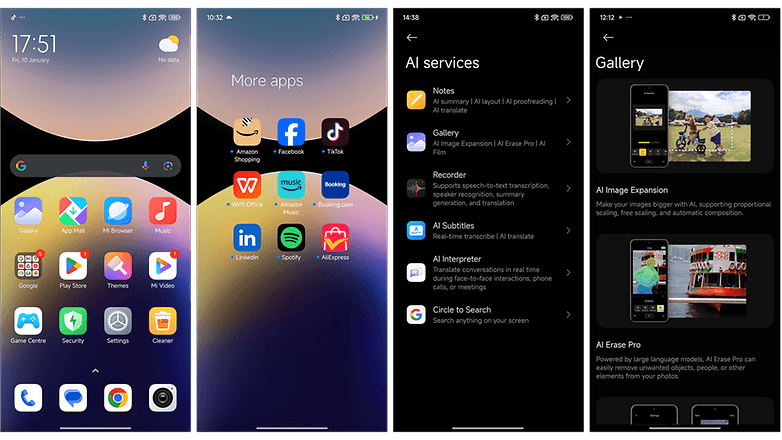
Translate and/or summarize texts, record audio in the recorder, and have it transcribed later. It all works, but the quality of the latter in particular, varies greatly. Once again: these tools have to be on board these days to remain competitive. But that should definitely not be the reason why you decide to buy this Redmi smartphone.
We should also mention AI movie here. You can select videos and photos from the gallery and create vlogs in a jiffy. Optionally, you can also formulate a prompt for the desired vlog. This is also really nice, but not a game changer if you ask me.
Xiaomi Redmi Note 14 Pro+ performance and hardware
As far as I know, the Qualcomm Snapdragon 7s Gen 3 is featured in this phone for the very first time, so it's still brand new. Does that mean the SoC's performance completely blew me away? Unfortunately not.
The Qualcomm SoC was manufactured using the modern 4nm process and is said to squeeze around 15 percent more out of it than the predecessor SoC and be noticeably more efficient. I cannot tell either of these just by using it. So yes, I'd like to believe that the Snapdragon 7s Gen 3 has more power than the second-generation 7s. But you don't notice it in everyday use. However, it's not nearly as weak as my result in 3D Mark's Wild Life Stress Test suggests. I repeated the process and came up with similar values—so I didn't mismeasure or misread, but I still think there's a mistake here.
Regardless of this, the Redmi Note 14 Pro+ doesn't really cut it. The $200 cheaper Poco X6 Pro (review) with the Dimensity 8300 Ultra runs circles around the Redmi phone.
| Redmi Note 14 Pro+ 5G (Snapdragon 7s Gen 3) |
Redmi Note 13 Pro+ 5G (Mediatek Dimensity 7200 Ultra) |
Redmi Note 13 Pro 5G (Snapdragon 7s Gen 2) |
Poco X6 Pro (Dimensity 8300 Ultra) |
|
|---|---|---|---|---|
| 3D Mark Wild Life Stress Test |
Best loop: 1,049 Worst loop: 1,034 |
Best loop: 4,306 Worst loop: 4,276 |
Best loop: 3,050 Worst loop: 2,754 |
Best loop: 7,559 Worst loop: 7,518 |
| 3D Mark Nomad Light Stress Test | Best loop: 361 Worst loop: 353 |
- | - | - |
| Geekbench 6 | Single: 1,173 Multi: 3,259 |
Single: 1,107 Multi: 2,685 |
Single: 889 Multi: 2523 |
Single: 1,356 Multi: 4,228 |
| AnTuTu | 741.190 | - | - | - |
Did the device get hot during normal use? Nope, not noticeably warmer, only when gaming did the temperature rise. Even during the stress test, the temperature did not rise above 35° C. Overall, the performance seemed "okay" to me, but I had somehow hoped for more 'oomph'.
For $500 a pop, you can actually expect more: The Best Premium Smartphones You can Buy for Under $600
Another thing that struck me about the hardware: while we have up to 512 GB of internal memory, it uses older, slower components! Last year, UFS 3.1 memory was present but this year, only UFS 2.2 was used, not to mention LPDDR4X RAM.
Finally, not much has changed in terms of connectivity. Wi-Fi 6 is still supported, but Bluetooth now made it to version 4.0. The USB-C port should only be 2.0. The SIM slot accepts two nanoSIMs, but you can also use an eSIM as an alternative.
No new cameras: a slight disappointment
Nothing new to see here, I'd say: While the Chinese model of the Redmi Note 14 Pro+ has a new 50 MP sensor as the main camera and Xiaomi has even added a 50 MP telephoto sensor, we get the identical camera setup of the Redmi Note 13 Pro+ here, including a 2 MP macro camera.
It's always a shame that so little happens in the mid-range camera segment. It feels like this is where we have seen the least progress for some time now. In this case, Xiaomi doesn't really put much effort into it either, instead simply recycling the same sensors into the Redmi flagship of the year. It's a shame, as the Chinese version has an additional camera that allows you to take 50 MP telephoto photos.

Basically, I don't feel like telling you much more about the individual sensors. The main camera with 200 MP resolution normally takes 12.5 MP photos via 16-to-1 pixel binning, which is really good. In my opinion, Xiaomi recently tweaked the color reproduction, as the results look less gaudy and therefore more realistic. I like this, but I also liked it on the 2024 version of the Pro+.
The ultra wide-angle camera with 8 MP, on the other hand, is something I like less. Under favorable conditions, it sometimes takes decent photos, but I'm generally not convinced by the quality, not for a $500 smartphone. I'll spare us the 2 MP macro camera crap and use the time saved to complain about the lack of a telephoto sensor.
I'm not quite sure about one flaw: could it be that the night photos looked a teeny bit better last year? Take a look at the photo gallery here, which also include two selfies with the new 20 MP selfie camera. And yes, after that I suggest you read the Redmi Note 13 Pro+ review again if you want to read more about the built-in sensors.
Battery life and charging
The battery has a capacity of 5,110 mAh and with fast 120 W charging, allowing the handset to be recharged in no time at all.
Unfortunately, there are a few downgrades compared to the China model. The global model of the Redmi Note 14 Pro+ is slower in terms of memory—and the battery is also significantly smaller at 5,110 mAh. This naturally has a slight impact on the battery life. According to the benchmark test, carried out in flight mode and with a brightness of around 200 nits, we landed just above eleven hours. However, this applies if you used the 120 Hz refresh rate for the display in the test. At 60 Hz, the result would have been significantly longer.

Either way, the Redmi Note 14 Pro+ will get you through the entire day without any issue. Even if you don't: just ten minutes plugged in is enough to charge the phone by more than half, and it's fully charged after around 25 minutes thanks to 120 W charging. Unfortunately, wireless charging is not an option this year, either. At least Xiaomi still includes the charger in the box!
Xiaomi Redmi Note 14 Pro+ 5G technical specifications
| Editor's recommendation | |
|---|---|
| Device | |
| Image |

|
| Price (RRP) |
|
| Display |
|
| SoC |
|
| Memory |
|
| OS |
|
| Camera |
|
| Selfie camera |
|
| Battery capacity |
|
| Connectivity |
|
| IP certification |
|
| Dimensions and weight |
|
Should you Buy the Redmi Note 14 Pro+?
Would I recommend buying the Redmi Note 14 Pro+ from Xiaomi? Yes, probably, if it weren't for the almost equally good predecessor model, which is currently available for around $300. The price even dropped further over the holiday period, so be sure to keep an eye out for offers.
My overall impression is a little confused at the moment: The device looks really good, the display is still great, and is now even brighter. The SoC and camera have stagnated, albeit at an acceptable level, while the battery has become bigger and charges quickly. HyperOS has new AI functions in tow, but apart from that, there is very little going on here either.
So I'm looking at a mid-range smartphone that is good, has no real complete failures to complain about in terms of specifications, but is priced a little too expensive for me. If you have to buy one today, I would advise you to go for the predecessor or take a look at our best $400 smartphones list.
We're looking for real advantages with a magnifying glass, so I'm a little wary of raving too much about the Redmi Note 14 Pro+. On its own, however, Xiaomi offers a really nice device here. If you really want this model, I would recommend you wait a few weeks. I am sure the price will quickly drop below the $400 mark, which will make the handset a much more interesting proposition.
Do let me know what you think: am I being too harsh in my assessment of what is actually a good smartphone?
